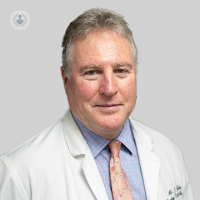Complications, dos and don’ts of septorhinoplasty
Written in association with:Like any surgical procedure, there are risks associated with septorhinoplasty, as well as a strict set of instructions to subscribe to when you are healing and recovering. Mr Joe Marais, an expert rhinologist, explains these complication risks and the dos and don’ts following a septorhinoplasty.

Are there any complications?
Every operation has potential complications. In septorhinoplasty, these include:
- The first is common to all nose operations – that is, bleeding. There is always a small amount of bleeding post-operatively, and it is nearly always self-limiting. However, there is a very small risk of a bad nosebleed. This may occur up to 10 days post-operatively. A little fresh blood in your hanky is no cause for concern but if it persists (e.g. dripping actively), you should:
- Sit down in a chair and relax (do not lie down)
- Pinch the soft part of the nose firmly for 15 minutes
- Spit out any blood into a bowl placed in your lap
- Place an ice-pack (or a bag of frozen peas etc.) over your forehead. Try sucking an ice-cube. This reduces nasal blood flow.
- If these measures do not stop the bleeding, and it continues unabated without any sign of slowing down after 30-45 minutes, you should attend your closest Accident and Emergency Department. Inform them that you have had a septorhinoplasty.
- Failure to achieve the desired result. This is obviously relative, as it depends on what was expected in the first place, hence the importance of having a clear and realistic understanding of the possibilities. Nonetheless, due to various factors, such as cartilage collapse, poor healing etc. the nose may not look pleasing to the eye after the surgery. Some of these causes are out of the control of the surgeon. It should be kept in mind that an attempt to improve one aspect of the nose may cause a problem in another (e.g. shortening cartilage in one area may cause it to bend in another). You should be aware that the final result may not be exactly as you envisaged it.
- Change in nasal shape: shortening, reduced projection, drooping can all occur, often due to scarring – which can be out of the surgeon’s control. That is, some people do not heal as well as others.
- Often edges of cartilage or bone are palpable (can be felt) under the skin. They may or may not be obvious to the casual onlooker. Every effort (e.g. filing smooth, etc.) is undertaken to minimise this. Thin skin accentuates this problem. Further surgery may or may not be required.
- At least 10% of patients who have septorhinoplasty surgery end up wanting or needing a second septorhinoplasty to adjust or correct something.
- Adhesions may occur: this is where the internal nasal lining may become stuck together in places and may cause nasal obstruction which may be permanent. This is usually the result of nasal swelling and inadequate nasal cleansing. It may require surgical division.
- Septal perforation may occur. This is more likely in revision cases, occurring in <5% of cases. This may occur as a result of tears sustained in the septum’s lining. It may leave a permanent hole, which can cause crusting and bleeding. Repair may be difficult or impossible.
- Infection: this is rare, but sinusitits may occur. This condition is itself common, and may have nothing to do with the septorhinoplasty surgery.
- Persistent post-op swelling, puffiness or dark rings under the eyes. This is rare, but may persist for weeks or months. This is usually due to venous dilatation, in susceptible individuals. Skin changes in the skin overlying the nose can occur (e.g. redness, thread veins etc.), also in susceptible individuals. This may be treated later by laser therapy. Sunburn may be severe in first year post-op, and must be avoided.
- Loss of sense of smell. This is extremely rare, but it has been recorded.
- Surgical emphysema: air trapped in surrounding soft-tissues of nose and cheeks. Not dangerous and arises because of excessively hard nose-blowing. This disappears spontaneously.
- It should be clearly understood that revision surgery carries with it a higher risk of virtually every complication, compared to first-time surgery.
- Any implants, if used, may extrude (i.e. come out). This is due to scarring and not surgical technique.
Are there any Dos and Don’ts afterwards?
Dos:
- Irrigate or douche the inside of the nose afterwards. This helps flush away the scabs and crusts that can accumulate inside afterwards. Moistened cotton wool can help wipe away the dried blood attached to the nostrils, if present.
- Once the plaster has been removed, you should massage the area over the nose and cheeks with a good skin cream to help dissipate swelling and bruising.
- Continue to wear the plaster at night in bed for a further week to protect the nose from being squashed or pushed into an abnormal position when sleeping.
- Physical rest is important for the first week.
Don’ts:
- Undertake any heavy physical activity in the first week after surgery, especially bending down and/or picking up heavy weights. No contact sports for a month after surgery.
- Avoid sunburn on the nose and face for at least one year.
- Don’t worry if you find small bits of thread-like suture material when you blow your nose. These are probably dissolving sutures and are expected to fall away in due course. Blowing the nose after surgery is fine, if done gently.
- Avoid very hot baths and showers. This may provoke bleeding.
If you are interested in having a consultation about rhinoplasty, make an appointment with an expert to discuss the options.


